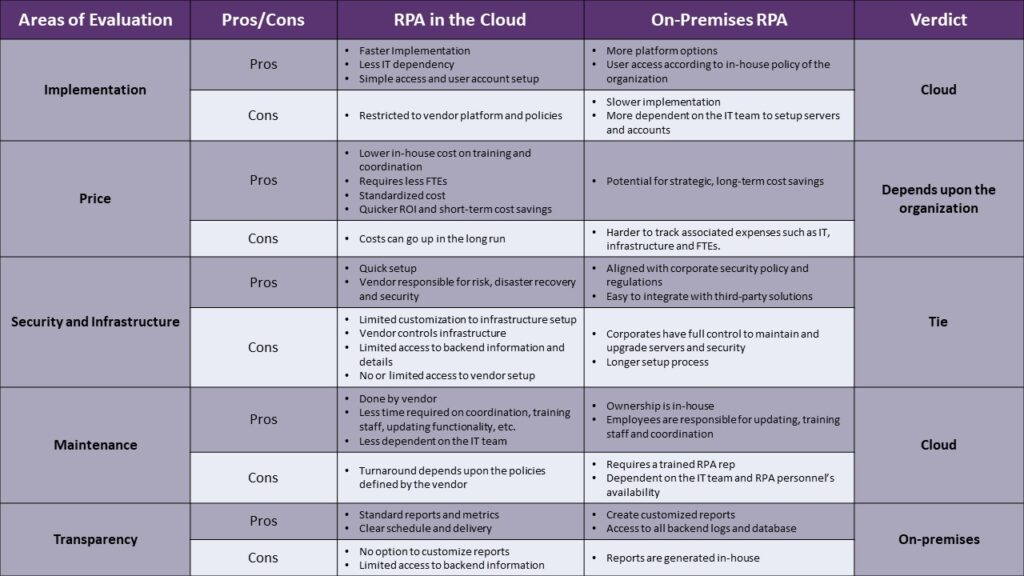Top 3 Causes CIOs Are Using Robotic Process Automation in the Cloud
A growing number of businesses are making the switch to the cloud. This highlights a basic challenge for robotic process automation (RPA): whether to install RPA as a service (cloud) or on-premises. RPA is frequently used by businesses to cut costs, increase efficiency and production, eliminate errors, and improve customer service. In this post, we’ll go through the benefits and drawbacks of implementing RPA in the cloud versus on-premises, as well as why the majority of CIOs are now using RPA in the cloud. Cloud vs. On-Premises The two extremes of the RPA deployment spectrum are native RPA on the cloud and RPA on-premises. The following are some of the benefits and drawbacks: RPA in the cloud Three Benefits of RPA on the CloudTo stay competitive, RPA in the cloud is the ideal method to keep up with changing client wants and business trends. It automates routine tasks fast and removes the need for complex infrastructure setup and maintenance. RPA-as-a-service enables users to create and employ a bot to complete tasks more quickly, allowing them to stay competitive and up to date on industry trends and technology. Businesses also receive regular updates, which offer a slew of new features that the staff may use right away.

1-Ownership costs When compared to on-premises deployment, RPA as a service is much less expensive. This is due to the fact that a cloud-based platform eliminates the expense of infrastructure and maintenance. IT departments are under a lot of pressure to move away from old systems and processes and toward the cloud. When using ERP systems like SAP, Oracle, and others, this work can easily become burdensome. By automating operations that are dependent on the legacy system, RPA can yield immediate cost and time benefits when deployed in the cloud. 2-Adaptability Another significant benefit of using RPA on the cloud is the ability to be flexible in your business and market. It enables businesses to quickly take advantage of new capabilities and technology. Artificial intelligence can be easily integrated with RPA as a service (AI). Advanced tools such as process discovery, which allows you to identify processes that can be automated and then create bots for them; software bots that can classify, extract, and validate structured and unstructured data in minutes; and a digital assistant that enables automation scalability across your workforce should all be included in the platform. These kinds of solutions aid in the discovery of new automation options as well as keeping up with current technologies. 3-RPA Managed Services: Finding a Middle Ground If you’re new to RPA and need a quick cure, RPA in the cloud is the most straightforward and cost-effective option. It provides a faster return on investment and is simple to implement. If you’re already utilizing RPA on-premises, you can operate it in the cloud without disrupting your current program. If you’re still undecided about which deployment method to use, consider RPA Managed Services as a compromise. RPA Managed Services entails brainstorming with an RPA vendor to determine the best course of action and re-engineering the process.

